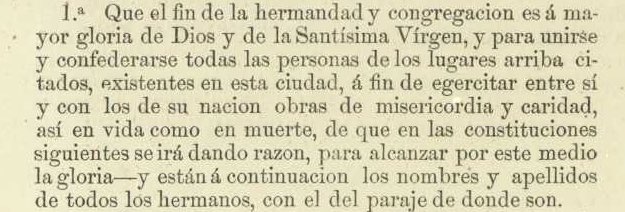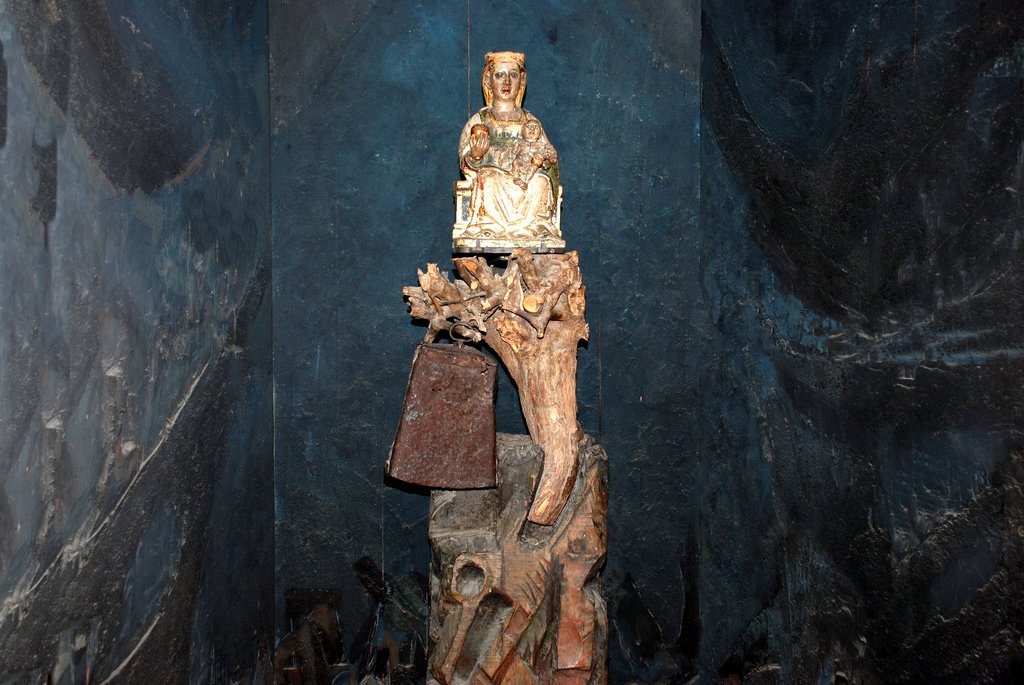This article was translated by John R. Bopp
A few days ago, we dedicated a longer article to the Brotherhood of the Virgen of Arantzazu of Lima, one of those elements of the history of the Basques that has always been maintained in academic circles, and which is rather unknown to the Basque community at large.
We recognize that this is a topic that fascinates us. We’ve already explained why on other occasions: the impressive influence of a community as small as the Basques’ on history in so many points of the world and the ability of that community to organize in the most far-flung places and recognize that they’re part of the same reality, which, in the 17th century, was already called la nación vascongada.
The Brotherhood that welcomed the Southern Basques had a dual mission: one was religious, and the other was solidarity and support among Basques in need in Lima, even if they weren’t members of the brotherhood. This can be seen in the first article of their rules, approved in 1613.


The religious aspect is fundamental. We cannot forget that they organized at the Church of St. Francis of Lima, and that their patron is Our Lady of Arantzazu. None of that is strange. Firstly, because the Virgin of Arantzazu is fundamentally important in the history of the Country, as you can read about in an older article. Moreover, the Church of St. Francis of Lima was under the control of the Franciscans, who were also in charge of the Sanctuary of Arantzazu in Gipuzkoa; in fact, at the time, those in charge were also members of the vascongada nation, having come from that Sanctuary in Oñati. Finally, the weight and influence of Religion and of the Church in that time, especially in Basque society, was huge, and touched every aspect of life.
We’ll speak more about this organization of Basques outside their homeland, which was the first that was legally recognized and which even managed to declare its independence of the civil and ecclesiastical authorities.
We’ll also speak more about Juan de Urrutia, the merchant from Tolosa who moved to Lima and was a key player in the founding of the Brotherhood: he was in charge of ensuring that the replica of Our Lady of Arantzazu to preside over the chapel of the Brotherhood in Lima was an exact copy of the one in Oñati. In Lima, she is joined by an Our Lady of Begoña, as well. That figure was destroyed in a fire in the 19th century, and was substituted with another that did not maintain the similarity of the icon destroyed by the fire.
We’ll also speak more about the Franciscans of Lima (and of other parts of the colonies), many of them having come from Arantzazu, and who were key players in understanding the diffusion of Basque brotherhoods throughout the Americas. It’s enough to see that the first book published about the devotion to the Virgin was published in Lima in the middle of the 17th century; it’s a book that holds an interesting surprise, as well. We’ll even talk about the Passionist Fathers, a religious community our families were a part of, which collaborated in saving human beings from the claws of Francoism.
But on this February 13, when we’re celebrating the 406th anniversary of the meeting that founded the oldest Basque organization abroad, we’d like to highlight the story of a key piece of the history of the Brotherhood which had been lost and is now recovered.
As we said, the religious part was fundamental to the creation and development of this group. And one of the key pieces of that was a specific novena for addressing the Virgin. This document, part of the history of the Brotherhood and the Basques in Lima, was reprinted for the first time in the middle of the 19th century, and then it was lost and forgotten.
When it was no longer remembered, the Bazan family, members of the Brotherhood who were preparing the ceremony for the 400th anniversary of their foundation, found a copy of this document, printed in the 19th century and uncatalogued, in the Peru National Library. It was, as we said, the last reprint made by the Brotherhood, with the following explanation in 1863:
A ‘novena’ of our mother and lady of Arantzazy, who is venerated at the Church of Our Father St. Francis, composed by a religious devotee of his, and who because of a zeal for good and the usefulness of souls, has had the current religious administrators of the Basque Brotherhood of that lady reprint this. In Lima, Francisco Press, Solis, 1863.
A century and a half after that printing, in 2013, the Brotherhood of Arantzazu of Lima again reprinted it, in a version adapted to the language of the 21st century. The work was done by a Passionits father, Basque, and world expert in Holy Scriptures, Father Antonio María Artola Arbiza, a priest with strong connections to Arantzazu, as he himself tells.
Five years later, on February 13, on the 406th anniversary of the foundation of the Brotherhood by those Basques in Lima, members of the family that belonged to the Brotherhoods of Lima (the Bazan family) and of Mexico City (Isabel Barraxa) decided to hold a dual homage, to those Basques, who spoke the Basque language and used it amongst themselves as their monther tongue on the one hand, and on the other, to the history of one of their most notable achievements, the Brotherhoods of Arantzazu in the Americas.
That’s why they ordered a translation of this novena into Basque, and published in on .pdf, making it available to all, thereby closing a circle that was still open.
According to tradition, the words shepherd Rodrigo de Balzategui said when coming across the image of the Virgin in the mountains were Arantzan zu?! (among the thorns, you?!). Those Basque words gave a name to that devotion of the Virgin, Our Lady of Arantzazu.
It seems logical that this key part of the history of the first Basque Brotherhood in the Americas should also exist in Basque, closing a circle that joins that 15th-century shepherd with all of those of Basque descent in the Americas in the 21st century, encompassing the lives and stories of thousands and thousands of members of the Vascongada nation over five centuries.
Amen
In collaboration with


Last Updated on Dec 20, 2020 by About Basque Country





























